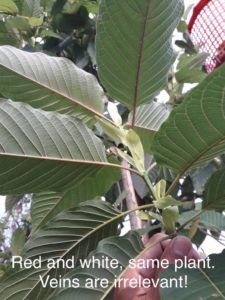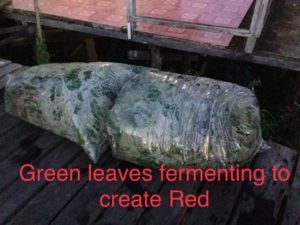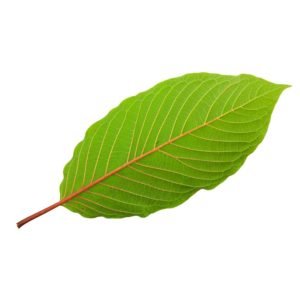The Truth About Strains
An in-depth guide on the kratom industries strains
After 6 years of medium scale importing and daily kratom use, and from all the research we have gathered, both scientific and industry based, we have discerned that there is little truth or substance to the strains in the kratom industry. Here we give you an in-depth, behind the scenes look at Indonesian manufacturing practices. Furthermore, we break down the science that is currently available on strains. By educating our customers, we can help them avoid lower quality kratom, and help them to understand why it is in their best interests to source the greenest kratom they can. And that’s what Crisp is – the greenest and highest quality kratom we can possibly source!
As we continue to learn more about the industry and the science available, we will continue to update this page. As such, we have recently come to learn there may be some truth to the consensus that greens are more stimulating, and reds are more sedative. But contrary to popular belief, it is not because reds have elevated 7-OH levels. It is very likely that fermenting increases a certain chemical that induces relaxing effects. You haven’t heard this one before. Be sure to read until the end to find out!
The first fallacy most customers believe is that the strains are sourced from different countries. Strains such as Malay, Thai, Vietnam, and Bali suggest that the leaves are sourced from these different regions/countries. However, nearly all of the world’s kratom (99.9%+) is sourced from Indonesia, more specifically from the region of Borneo. Kratom has been illegal in Malaysia and Thailand for quite some time, and we haven’t seen any valid evidence that supports kratom growing in Vietnam. And while Bali is in Indonesia where kratom is legal, it is mainly a tourist island. There is no kratom sourced from the island of Bali and no evidence that kratom even grows here. Therefore all of the Malay, Thai, Vietnam, and Bali on the US market are sourced from Borneo. Most kratom suppliers live in the city of Pontianak, while the leaves are sourced from farms and areas along the Hulu Kapuas river.
A common rebuttal we hear to the strain locations is that farmers got the genetics from these different countries and grew them in Indonesia. Considering how widely unregulated the kratom industry is, it doesn’t make sense to trust thousands of different suppliers are upholding some code of honor to make sure strains are authentic. The internet has allowed third world people who own very little to contact American kratom buyers and broker deals. Most American kratom importers are buying from a broker rather than directly through the manufacturer. The Indonesians will give you anything you ask for, and since the strains are all made up anyway, they might as well lie to you, because if they don’t, they’re giving your business to someone else who will.
Now lets get to the science available on strains….
Scientists have studied the different leaf types. There are red vein leaves, white vein leaves, and green vein leaves. There are also horned leaves that come with all three vein colors. Thus far scientists have found no noticeable difference in the alkaloid content or the ratio of alkaloids between the different leaf types. This has been stated by Dr. Chris McCurdy, a researcher at the University of Florida, who is one of the world’s leading researchers on kratom. You can click the following Soundcloud link below to hear Dr. McCurdy say this.
"From the research we've carried out comparing the different strains and different leaf forms, we really haven't seen much of a difference in their chemical compositions or makeup, and not even a difference of the ratio of alkaloids in those plants"
- Christopher McCurdy, Ph.D, F.A.A.P.S

Believe it or not, red vein, white vein, and green vein leaves can all grow from the same tree. There are many variables that can contribute to the alkaloid content of a kratom plant (soil, sunlight, water, nutrients). Since kratom is farmed outdoors, these variables are not controlled. We believe that the variables must be controlled with indoor growing before anyone can declare with certainty that their genetics are resulting in certain alkaloids are consistently higher, or lower. We believe that a mature and healthy kratom plant will contain a robust alkaloid profile.
Now we will get to the Indonesian industry practices and this is where you’ll really learn what is going on with strains. The following link, posted by a reddit user, is the single most in-depth resource we have found on industries manufacturing practices, aside from our own:
The Truth On Strains and Production Personally Witnessed
In the kratom industry, you’ll find red, white, and green kratom are sold as red vein, white vein, and green vein. This leads buyers to believe farmers are separating the leaves by different type. However, if you read the link above you’ll learn this is not the case. Most of the world’s kratom comes from a few large processing centers. Huge dump trucks full of kratom leaves are brought into the city where these big processors buy their leaves and turn them into powder. These sacks are not labeled, meaning the leaves are not separated by type. Each processor will use the sacks filled with various leaf types to make up all their different strains.
So every batch of kratom is actually a mixture of all different kinds of leaves, but the majority of leaves are red vein. Some have said as much as 99% of the leaves in Indonesia are red vein. Separating leaves by the different type would not only be tedious work, but considering the science that currently shows the leaves have no noticeable differences, it would be pointless also. Manufacturers will turn one harvest lot of leaves into dozens of strains, just by making the color of the powder different. The greenest powders become green strains, the reddest become red strains, and anything in between is white.
The red “strains” often go through different drying techniques/lengths to achieve a red colored powder. If your kratom vendor is providing you with green powder when you order red or white vein, then we believe they are doing a good job and looking out for your best interests. But most of the industry is not doing this. To prove that, compare google image results of red maeng da to green maeng da, or any strain of red vs. green. What you’ll find is that the color of the powder with red strains is most often red. It has nothing to do with the vein color, and everything to do with powder color.



Take a look at this red vein kratom leaf. Aside from the vein, notice that the leaf is green. If kratom leaves are de-stemmed and de-veined (and they are), tell me, why would a green leaf produce a red colored powder? Heck, even if the vein remained, would it really dominate the color that much to turn the powder red? No!

If you clicked that reddit link you saw how fresh green leaves are placed in a bag in the sun to ferment and create red. But not every manufacturer has practices like this. Sometimes red kratom can be old powder that was once green and turned browned over time. Since most of the industry sun dries their leaves, red kratom can also be made from the leaves that were neglected and burnt in the sun. Most of the industry sells this brownish/red powder as “red vein” and a lot of it is low quality with lower alkaloid levels. Although not all red kratom is neglected or old, fermenting practices like you see in the link will often produce harmful bacteria. This is why we strongly believe every customer should strive for a super green kratom product. Powder color can change over time and from heat exposure. If we left a super green batch in a hot warehouse for a year, it would turn red eventually. If vendors were really separating by leaf type and giving you only red vein leaves, why would they also change the powder color?
But you might be wondering, is it possible that different drying practices can lead to different effects? Maybe. It is commonly said that as the leaves dry, 7-hydroxymitragynine (7-OH) increases. However, we have never seen any science or data that shows this in pure kratom leaf samples. There is a research paper that showed that 7-OH increased in extract when oxidized in sunlight, but it was in extract. In pure leaf samples, 7-OH is actually barely detectable, so much so the lab reporting is not reliable or accurate. Our 7-OH levels usually come back from .003% to .012% and the labs have confirmed it’s basically pointless to go off because it’s hardly detectable. Another thing we’ve asked our lab, Murray Brown, and also Wonderland labs, is if they noticed any elevated 7-OH between reds and greens. They both confirmed they hadn’t, but the reality is, it’s such a trace amount the results are likely not even accurate. Is it possible that labs aren’t able to do a detailed measurement and that those tiny little thousandths of a percentage could make a difference? Maybe.
We were once a believer in the theory that the alkaloid levels change as the leaf dries. When we first got into indoor dried kratom, sometimes there were batches with slightly too much moisture that seemed to get more potent as it aged. I would frequently say that indoor dried kratom would get more potent after you open the bag. And I still believe this may be true. So we remain open minded to the theory that certain alkaloids increase during the drying process. There are 40 alkaloids in the kratom leaf so it might be another alkaloid other than 7-OH. If we ever do discover that as leaves dry certain alkaloids increase, we will update this post. As for now, it doesn’t appear there is any science that verifies this theory.
Update: As we have continued to learn and reflect on kratom more, we have discovered there is truth to the consensus that greens are more stimulating, and reds are more sedative and we will explain why. If you ever chew a fresh kratom leaf, it is very very stimulating, more so than any powder. We believe that as the leaves oxidize, these stimulating alkaloids will degrade. So as you move from super green, to white, to red, you are likely going to lose some speed. Not only that, but check this out. This is cool. Other tea industries actually have a special process for increasing the GABA content in tea leaves. The process involves placing leaves into a tank and removing the oxygen. GABA is present in all living organisms. We suspect that because leaves are basically suffocated in plastic bags in the fermentation process, this will increase the GABA content. For those that don’t know, GABA is an amino acid that influences the GABA receptor in the brain. You can actually find GABA supplement at the store and it is worth buying if you want to sleep like a baby.
The term “strain” typically refers to genetic traits that are consistent batch to batch. In the cannabis industry, there are true strains that have consistent physical and chemical traits from birth. But in the kratom industry, you don’t even have suppliers using the same types of leaves on their strains. So how is that a strain?
Based off the current climate and science available, there is really no reason to place your trust strains or defend the sanctity of them. Like we said before, it doesn’t make sense to assume that thousands and thousands of vendors in an unregulated industry are upholding a code of honor to make sure you get authentic “Bali”, which doesn’t even exist. What you have are a bunch of people taking batches with different colored powder and slapping different labels on them. And when you go across the broad spectrum of the industry, there really is not one single consistency or truth to strains other than calling it Borneo or Indo, since pretty much all kratom can be called Borneo or Indo. Those are probably the most honest labels/strain names you will find.
Before it seems like we are ousting other vendors or putting ourselves on a pedestal, we want to admit that we have sold strains for 5 years on our BKB Herbal website and still continue to do so. When you are new to an industry, you want to cater to what customers are looking for, and you want to appear like you know what you are talking about. After a certain amount of time in the industry, we felt we were experienced and equipped enough to challenge this misconception about strains . We have dedicated ourselves and approached kratom with a pure and honest spirit, and after 5 years we feel that taking this bold step into the light will allow us to improve our quality and deliver better products to our customers. The truth shall set you free!
When you consider that Indonesian suppliers are able to sell brown kratom with the lowest manufacturing standards for the same price as bright green kratom, you realize that kratom strains really are a clever con. If we were to source red and white powder, we honestly feel that we would be sourcing inferior quality. We believe that strains have basically created demand for lower quality kratom by allowing suppliers to off their lowest quality supply, and not have as much oversight in their production.
The average kratom user will assess quality solely off of effects. This is not a good way to review as it enables low manufacturing practices. The reality is, any Indonesian can pick a potent leaf, dry it on the ground, and grind it in a dirty old machine. You want to make sure your leaves are dried in a sanitary environment, and processed with new equipment. We assess the quality of kratom off physical and tangible properties (consistency, moisture content, smell, taste, color).
Almost everything you read online about strains is written by vendors who are looking to write 300 word articles to optimize their websites for google so they can sell more kratom. The articles that kratom users base their opinions off of are not scientific, and most are adopting a general consensus view that “greens are for energy, whites are for mood, reds are for sedation”. This is how a lot of the internet works when there is not much research on a subject. One website will go to another website to base it’s information, because really they are just businesses whose priority is to get traffic for specific keyword searches, and then sell their products. Having true information is not the priority. If 10,000 people are searching for Bali kratom every month, vendors want to target those people and will fill up pages in order to do so.
We have been wholesalers for 6 years and dealt with a lot of other vendors. Most vendors will order in bulk by red, white, or green and then make up their different strains out of that. In our opinion, the smartest vendors will order just greens and then make their red and white strains from all green kratom. If your vendor supplies you with green kratom when you order red, we think they are looking out for your best interests. Every now and then, we run into a vendor who asks us for all these different strains and about how they make you feel. “Do you have red dragon?” “I need a white thats good for mood”. When we run into these vendors, we honestly roll our eyes.
We hope that we have proven beyond all reasonable doubt that kratom strains are not authentic. Comment below and let us know what you think!


